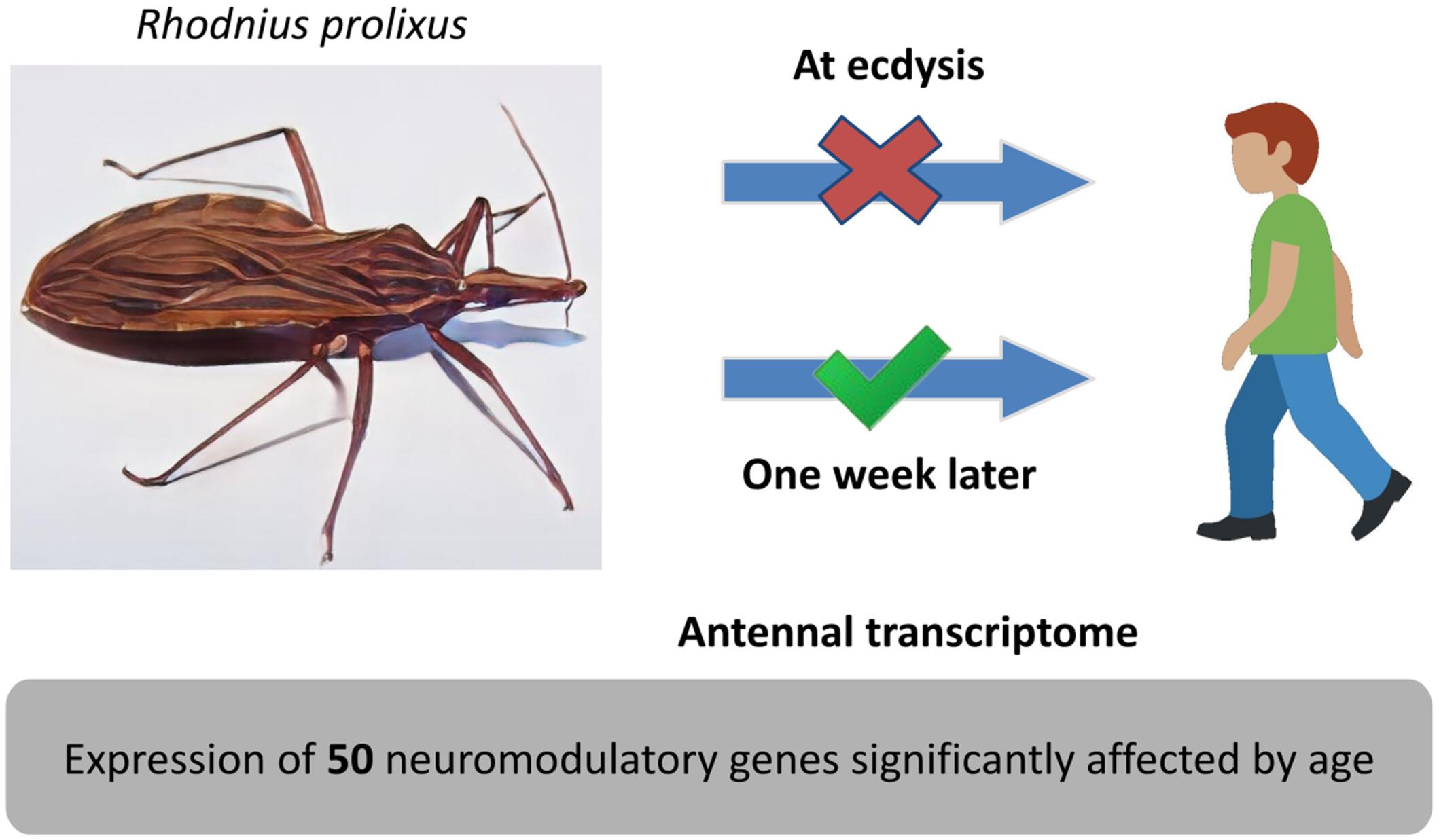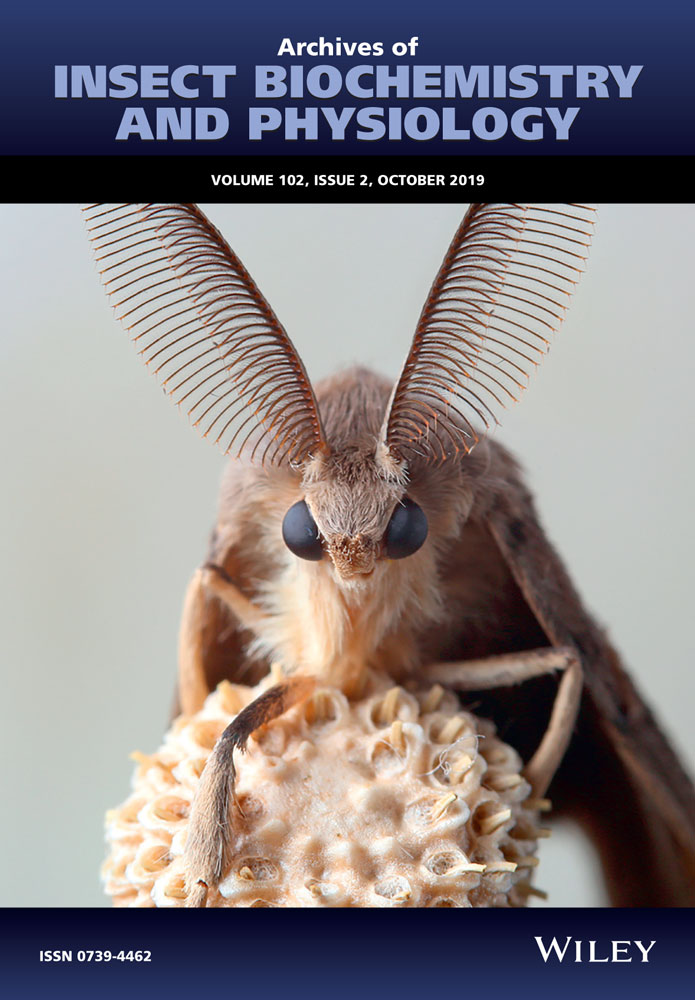Local age-dependent neuromodulation in Rhodnius prolixus antennae
Abstract
Kissing bugs do not respond to host cues when recently molted and only exhibit robust host-seeking several days after ecdysis. Behavioral plasticity has peripheral correlates in antennal gene expression changes through the week after ecdysis. The mechanisms regulating these peripheral changes are still unknown, but neuropeptide, G-protein coupled receptor, nuclear receptor, and takeout genes likely modulate peripheral sensory physiology. We evaluated their expression in antennal transcriptomes along the first week postecdysis of Rhodnius prolixus 5th instar larvae. Besides, we performed clustering and co-expression analyses to reveal relationships between neuromodulatory (NM) and sensory genes. Significant changes in transcript abundance were detected for 50 NM genes. We identified 73 sensory-related and NM genes that were assigned to nine clusters. According to their expression patterns, clusters were classified into four groups: two including genes up or downregulated immediately after ecdysis; and two with genes with expression altered at day 2. Several NM genes together with sensory genes belong to the first group, suggesting functional interactions. Co-expression network analysis revealed a set of genes that seem to connect with sensory system maturation. Significant expression changes in NM components were described in the antennae of R. prolixus after ecdysis, suggesting that a local NM system acts on antennal physiology. These changes may modify the sensitivity of kissing bugs to host cues during this maturation interval.


 求助内容:
求助内容: 应助结果提醒方式:
应助结果提醒方式:


